SMITHSONIAN CENTER FOR FOLKLIFE & CULTURAL HERITAGE
Why This Monument Offers Some Humanity to the Tragedy of the Salem Witch Trials
Now, 330 years after the executions, visitors to this seaside city will find a simple, peaceful memorial next to an aged colonial graveyard
:focal(600x400:601x401)/https://tf-cmsv2-smithsonianmag-media.s3.amazonaws.com/filer_public/0e/fc/0efccd43-6143-49d0-9006-35821c02c0ee/i-am-innocent.jpg)
It was during the exceedingly hot summer of 1692 when Puritan judges in Salem, an English settlement in the Province of Massachusetts Bay, condemned twenty people of witchcraft and publicly executed them.
Now, 330 years later, visitors to this seaside city will find a simple, peaceful memorial next to an aged colonial graveyard and hear, in the near distance, the occasional sound of church bells. Entering a rectangular space bordered by rough stone walls and shaded by towering locust trees, one crosses a wide threshold inscribed with the words of the victims, their protestations of innocence and pleas to God clipped by the memorial walls, symbolizing the community’s indifference to their plight. Twenty granite benches jut from the walls, each bearing the name of a person unjustly accused and killed.
Erected in 1992, this was Salem’s first public monument to those tragic events. As we mark the memorial’s thirtieth anniversary, it is perhaps more important than ever to remember the lessons of these injustices.
Salem’s witch trials were the largest and deadliest in North American history. Over the course of a year and a half, nineteen people were hanged and one man was brutally tortured to death. Though popularly referred to as “the Salem witch trials,” accusations had spread throughout Essex County and beyond. In total, between 150 and 200 people were imprisoned, ranging in age from four to eighty-one years old. At least five died in jail, including the infant daughter of convicted Sarah Good.
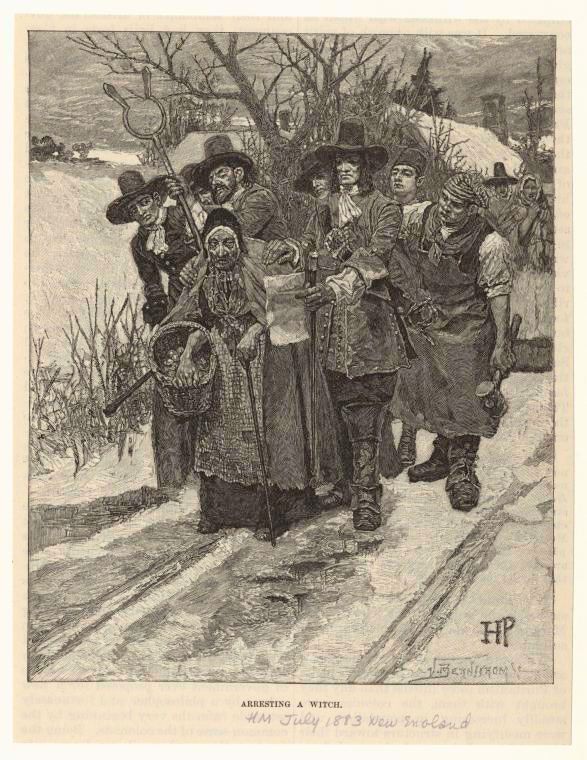
None of the accused were “witches,” defined in the seventeenth century as one who had sold their soul to the devil. Instead, it was a crime often lodged against social outsiders within a community.
Each of the twenty victims have their own heartbreaking story that can only be pieced together from fleeting comments in the records. Take for example the story of Ipswich’s Elizabeth How, a hardworking, fifty-five-year-old wife and mother executed July 19, 1692. A decade previous, she found herself in a heated conflict with a neighbor who accused her of bewitching a child to death. “Everything that happened amiss to anyone was laid at her door,” wrote Charles Upham, a nineteenth-century historian. It was no surprise that Elizabeth once again became a target in 1692.
The brief recorded references to the devotion of Elizabeth’s family are deeply moving. In his testimony, her ninety-four-year-old father-in-law, James How Sr., commenting on the thirty years he had known her, said, “as a wife to my son, [she is] very careful, loving, obedient, and kind, considering his want of eyesight, tenderly leading him about by the hand.” While jailed in Boston, a full day’s journey from Ipswich, Elizabeth was visited twice a week by her blind husband James Jr., guided by one of their daughters. Despite testimony given on her behalf, she was executed on that July day along with four other innocent women.
Though small compared to the European witch hunts, which took the lives of approximately 45,000 people over the span of 300 years, Salem became infamous. Witchcraft suspicions were common, but executions were rare in the “New World.” Immediately after the Salem trials were over, there was a sense that something had gone terribly wrong. In 1697, one magistrate and twelve jurists apologized for their part in these events, as did one accuser almost a decade later.
The growing recognition of this injustice made Salem a common cultural reference as early as the eighteenth century. Noted by Founding Fathers during the American Revolution, included in early school books as an example of a moral failing, and invoked as a metaphor for contemporary scapegoating in the twentieth century, the tragedies of Salem have never left public memory.
The curious have traveled to Salem for centuries, drawn by the city’s macabre history. While visiting the area in 1766, future president John Adams listed in his diary a visit to “Witchcraft Hill”—thought to be the site of the executions. In 1895, a Salem visitors’ guide noted, “The Witchcraft Delusion, which caused many to flee from Salem for their lives two centuries ago, now brings thousands of visitors to Salem each year.”
Confronting our dark heritage can prove difficult. The reality behind witchcraft trials is often challenging for a modern audience to comprehend, as the word “witch” typically evokes a folkloric or popular culture figure, rather than a real human being. Only in the last half-century has the world seen an increase in the establishment of witch trials memorials, ranging in size from small plaques and simple markers, like the Brechin Memorial in Scotland, to larger memorial stones, such as those set in Torsåker Parish, Sweden, and enormous structures, like the Steilneset Memorial in Vardø, Norway. Each of these memorials is both an effort to remember the victims, many of whom have living descendants, and to educate people in hopes of preventing similar acts of hysteria and scapegoating.
Limited memorialization efforts of the Salem victims began in the late 1880s, driven largely by descendants. The first honored Rebecca Nurse, a seventy-one-year-old beloved mother, church member, and respected neighbor. Her hanging on July 19, 1692 had shocked the community. Family legend holds that her remains were retrieved from the hanging site and buried in an unmarked grave on the Nurse property.
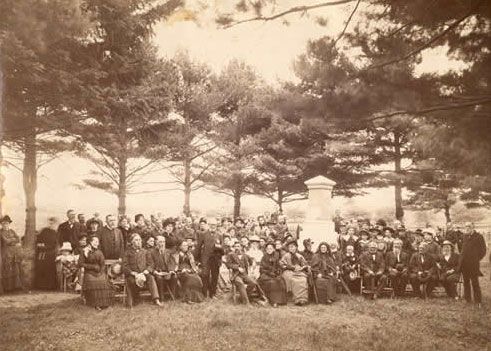
In 1885, more than 600 people, many of them descendants, gathered at the Nurse homestead in Danvers (formerly Salem Village) to attend the unveiling of a granite obelisk, inscribed with a John Greenleaf Whittier poem. Two other early memorials were erected: a plaque in Amesbury for Susannah Martin placed by the Amesbury Improvement Association in 1894 and another for John Proctor in Peabody placed by his descendants in 1902.
It would take almost a century more for memorialization discussions to continue in Salem. In 1986, the mayor’s office established an advisory committee to discuss how to commemorate the upcoming 300th anniversary of the witch trials. While “a firm and strong foundation” was built over the next few years, according to Tercentenary executive director Linda McConchie, progress was slow and met with obstacles.
As noted in the early Salem visitor guides, the witch trials long held a fascination for those outside the community. Some locals, however, were reluctant to acknowledge this dark heritage. The trials saw neighbors turn against neighbors and held a legacy of shame and embarrassment, a feeling that lasted generations. One former Danvers resident, who grew up in the 1960s, recalled being told in his youth, “in polite society, you don’t talk about divorce and you don’t talk about the witch trials.”
The New York Times reported in 1988 a proposed statue by Beverly, Massachusetts, sculptor Yiannis Stefanakis, a memorial depicting the three accused Towne sisters: the executed Rebecca (Towne) Nurse and Mary (Towne) Esty and survivor Sarah (Towne) Cloyce. The funds were privately raised, with no public call for design. An uproar ensued. Salem’s First Church pastor John Szala, who at the time chaired the mayor’s advisory committee, said, “[Stefanakis] took this to the City Council, and it was rushed through without a hearing and without the public being alerted to what he was doing. The community is divided as a result.”
In discussing support for the project, Stefanakis said, “I’ve got a pile of letters from across the country. However, I’ve received very, very few letters and money from Salem. I don’t think they were ready for this despite 300 years.”
This comment recalls a story shared by Danvers town archivist Richard Trask. In 1970, he led the effort to uncover the parsonage foundation in Salem Village, significant to the witch trials as the site where the trouble began and escalated. Trask recalls neighbors’ complaints. “Leave it alone,” they said. “Why do you have to bring this up?”
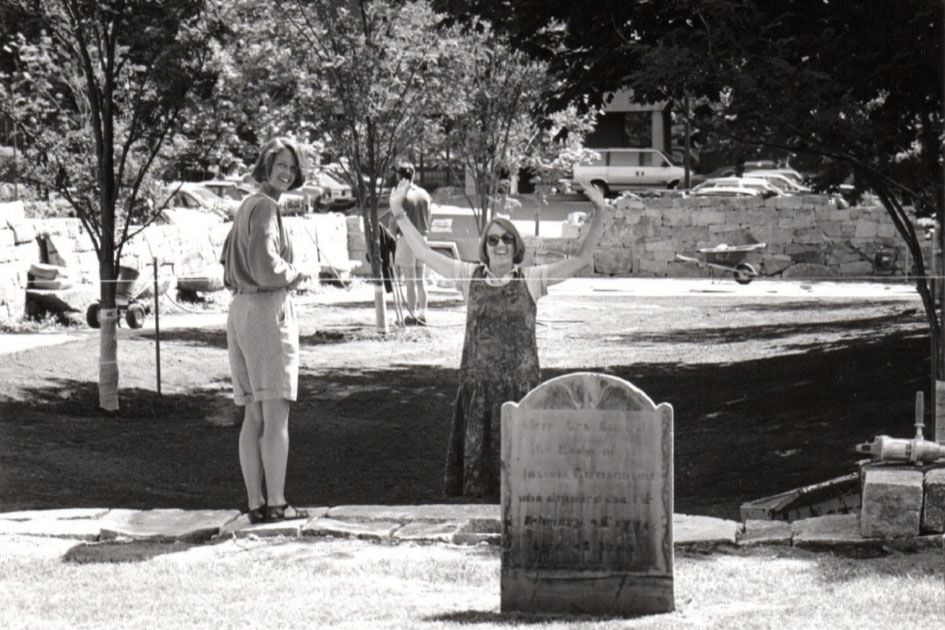
As the city’s witch-related tourism had grown in the latter half of the twentieth century, some felt Salem’s sad history was being disrespected and the human story behind the witch trials forgotten. “The goal of the [Tercentenary] was to reclaim the historical importance and significance of this tragic event,” McConchie says. The Tercentenary Committee—led by McConchie plus Patty MacLeod and Alison D’Amario of the Salem Witch Museum—planned a year-long commemoration with two key elements in mind: the construction of a public memorial and a lasting way to honor the innocent victims. They achieved the latter through the creation of the Salem Award for Human Rights and Social Justice.
With an estimated budget of $100,000 and an available piece of land in downtown Salem selected, the committee issued a public call for designs. They received close to 250 entries, which were judged by an expert panel of artists, architects, and museum professionals.
In November 1991, playwright Arthur Miller unveiled the winning design created by Maggie Smith and James Cutler. The Tercentenary Committee Final Report describes the memorial:
“Striking in its simplicity, the Memorial is surrounded on three sides by a handcrafted granite dry wall. Inscribed in the stone threshold are the victims’ protests of innocence. These protests are interrupted mid-sentence, symbolizing society’s indifference to oppression. Six locust trees, the last to flower and the first to shed their leaves, represent the stark injustice of the Trials. At the rear of the Memorial, visitors view the tombstones of the adjacent 17th century Charter Street Burying Point, a reminder of all who stood in mute witness to the tragedy. Cantilevered stone benches within the Memorial perimeter bear the names of each of the twenty victims, creating a quiet, contemplative environment in which to evoke the spirit and strength of those who chose to die rather than compromise their personal truths.”
These twenty innocent individuals refused to confess to witchcraft and were murdered as a result.
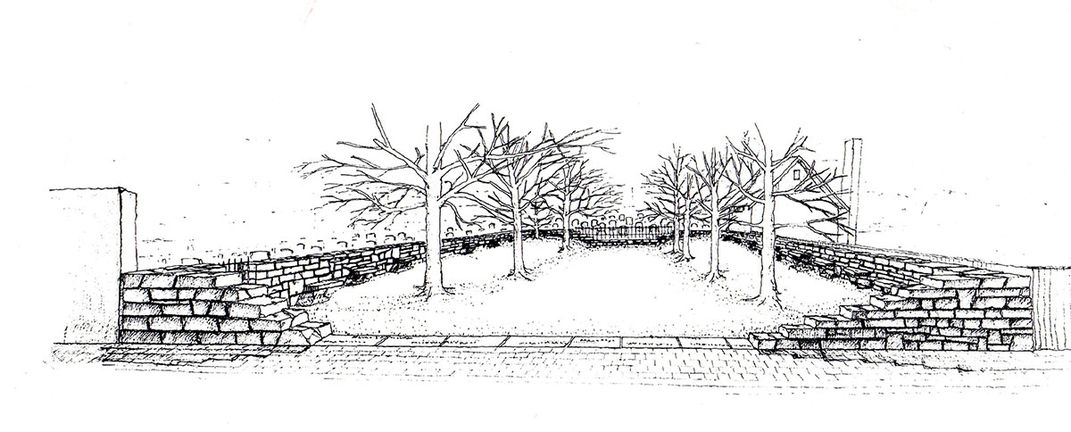
The dedication of the Salem Witch Trials Memorial was the centerpiece of the Tercentenary year. On August 5, 1992, Holocaust survivor and Nobel Peace Prize laureate Elie Wiesel gave a special address, speaking eloquently about his lifelong commitment to end hate and human suffering.
“In times of inhumanity, humanity is still possible,” he urged. “It is because people were fanatic that Salem was possible…. And fanaticism is the greatest evil that faces us today. For today, too, there are Salems.”
That same day, the committee presented its first Salem Award to Gregory Alan Williams, a hero of the Los Angeles riots which had erupted earlier that year, after the acquittal of the police officers charged in the beating of Rodney King. MacLeod reflects, “We wanted the award to be a lasting teaching tool.” The Salem Award Committee, now known as Voices Against Injustice, presents the Salem Award annually.
Throughout 1992, Tercentenary programming focused on the enduring lessons of the witch trials, encouraging people to reflect on the dangers of scapegoating during times of great fear and uncertainty. At the Tercentenary inauguration on March 1, Joshua Rubenstein of Amnesty International used the trials as a point of reference by which to examine human rights violations throughout history and today.
Despite the efforts of countless people to make the Salem Witch Trials Memorial a reality, less than twenty years later, the structure located in the heart of downtown Salem had fallen into disrepair. The problem was twofold: first, it was never clear who was responsible for the memorial’s upkeep.
Secondly, the original design called for the stones to be loosely laid, with no supporting mortar. People began to take pieces of it away as souvenirs, and it was frequently used during the geocaching craze in the early 2000s. Yet another fundraising effort was undertaken to refurbish this important site.
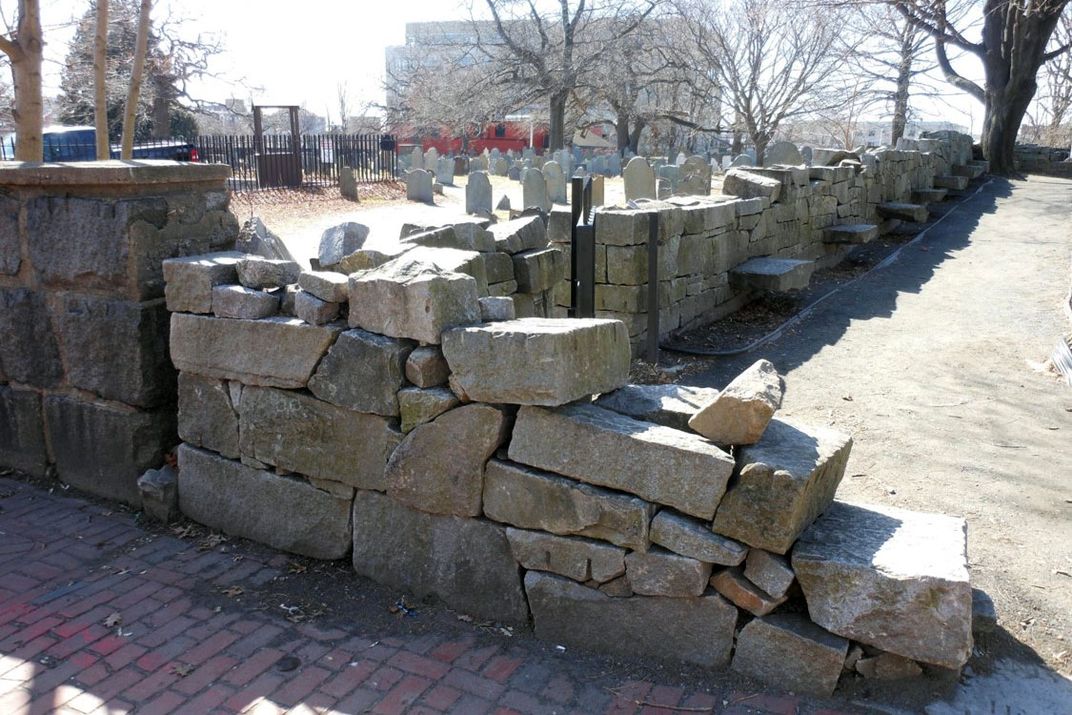
The structure was reinforced and rededicated on September 9, 2012. Today, the memorial is well-maintained by the Peabody Essex Museum, the City of Salem, and Voices Against Injustice.
Like so much about our venerable city, the Salem Witch Trials Memorial means different things to different people. For modern witches, it is affirming. For descendants, emotional. For tourists, an essential stop. Conversely, when asked about the memorial, several longtime residents stated they never visit nor do they have a strong opinion about the site.
Many self-identified witches have moved to Salem over the past half-century. Modern witchcraft means something different to each individual, though it can broadly be described as a sense of spiritual contentment and personal empowerment derived from the long and complex history of the witch.
Margaret McGilvray, a practicing witch and founder of The Witchery, an art and performance space in Salem, reflects, “When I am at the Witch Trials Memorial, I am not analyzing from a historical perspective. I’m feeling it. And that is why it is such a powerful memorial. It allows me to feel.”
Teri Kalgren, a member of the Witches Education League and owner of Artemisia Botanicals, who has lived and worked in Salem since the late 1980s, noted that while she wishes there was more interpretive signage at the memorial, it is “beautiful and very solemn to walk through. As a witch, I see [the witch trials] as something that could possibly happen again. It shows man’s inhumanity to man.”
In recent years, as genealogical research has become more accessible, there has been an increase in descendants arriving in Salem. According to the New England Historic Genealogical Society, 15 million Americans can trace an ancestral connection to the witch trials. For many, traveling to Salem is an important pilgrimage. It is a misconception that the witch trial victims were prohibited from interment in cemeteries. Ongoing research suggests the remains of some of these individuals were retrieved from the hanging site and quietly buried at their family homesteads. Because definitive grave sites for the victims remain unconfirmed, the memorial has become a primary place to pay respects.
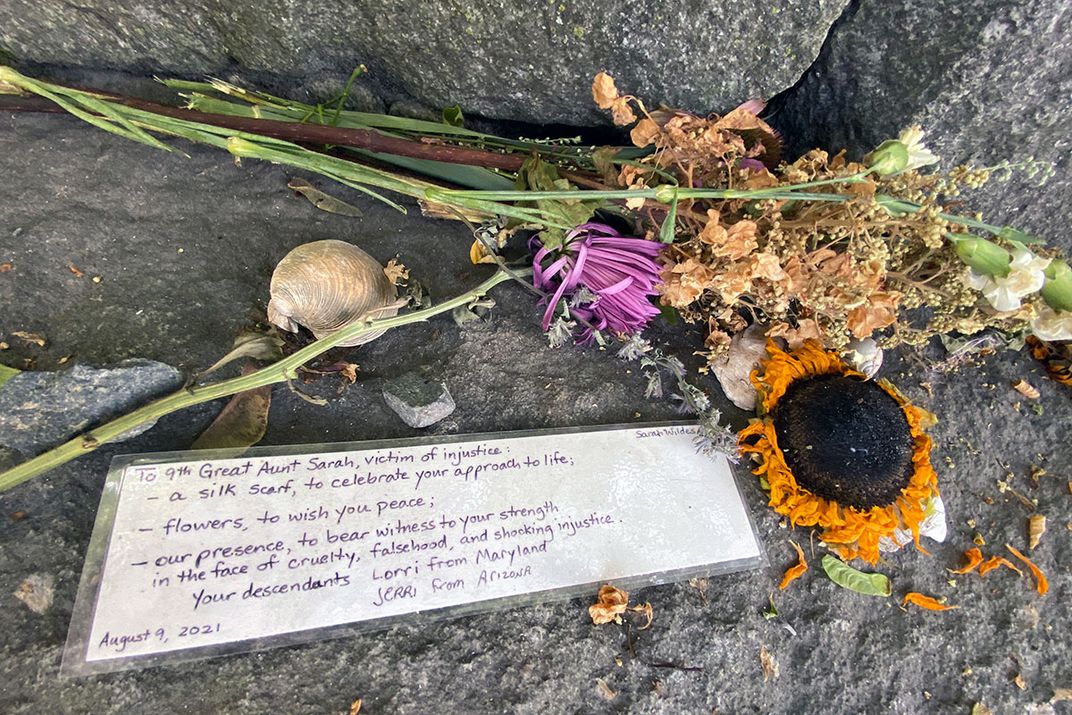
Throughout the year, and particularly on the anniversaries of the hanging dates (June 10, July 19, August 19, and September 22), visitors leave flowers, coins, and small objects on these stones. The memorial gives descendants a physical place to leave personal notes, many heartfelt.
Thousands of tourists visit the memorial each year. While most treat the space with reverence, some, particularly during the Halloween season, fail to appreciate the weight of this tragic history. Perhaps that is the reality of any public memorial dedicated to such distant events.
As the meaning of the word “witch” continues to change, so too does Salem. Navigating the spectrum of popular interest is no simple task. Salem’s heritage encompasses colonial history, the persecution of innocent people, beloved fictional witches, spooky Halloween fun, and modern magick. The Salem Witch Trials Memorial stands today in the center of it all, publicly reminding thousands of visitors of the city’s darkest chapter.
This permanent memorial is not only an interesting place to visit but an essential statement, one which speaks to the humanity involved in such a tragedy. The tendency to blame “the other” during times of uncertainty and fear is an enduring human behavior. Whether the fatal sickness of a child is blamed on an argument with a neighbor in the seventeenth century or an entire race for the COVID-19 pandemic, we continue to find scapegoats.
By memorializing witch trials, in Salem and around the world, modern communities are beginning the difficult process of reckoning with their own darkest tendencies.
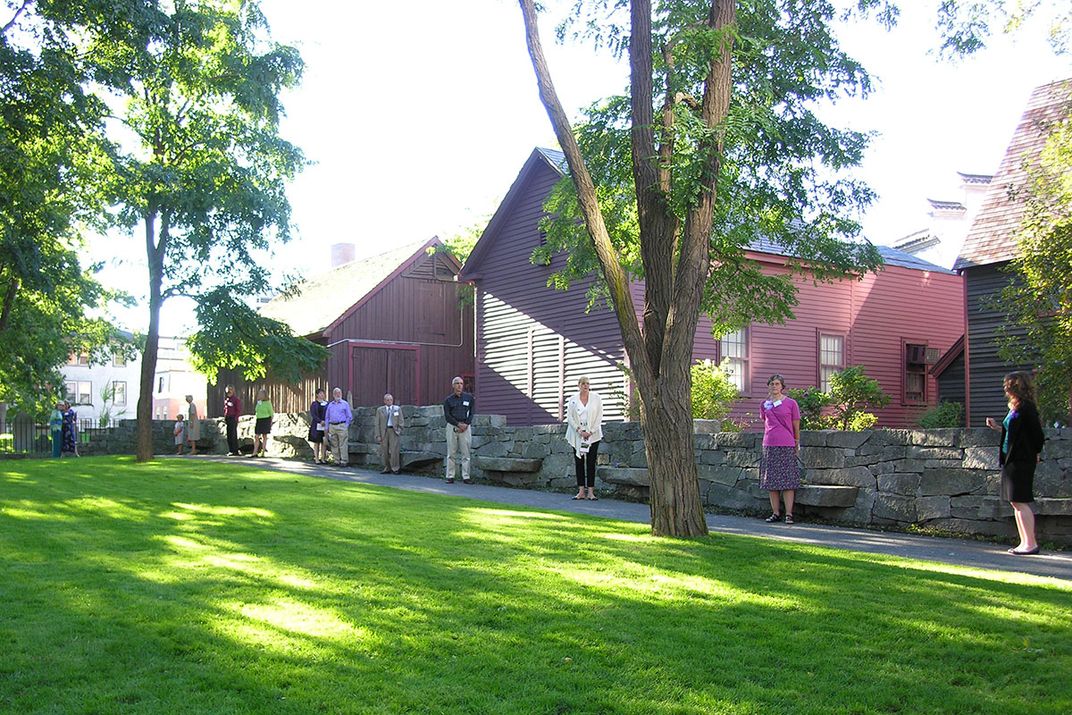
Rachel Christ-Doan is the director of education at the Salem Witch Museum, where she engages in research, works with students and teachers, oversees curation and exhibition development, and creates educational programming.
Jill Christiansen is the assistant director of education at the Salem Witch Museum, specializing in Salem witch trials research and acting as the book buyer for the museum store.
The authors wish to acknowledge the contributions of the many dedicated people who were involved in this project, particularly the trio of Patty MacLeod, Alison D’Amario, and Linda McConchie, who led the two-year effort to create the Salem Witch Trials Memorial, Salem Award, and year of Tercentenary programming.
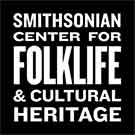
/https://tf-cmsv2-smithsonianmag-media.s3.amazonaws.com/filer_public/d7/01/d701d6ea-3f39-4362-aad1-421854508ca7/salem-witch-trials-memorial.jpg)
/https://tf-cmsv2-smithsonianmag-media.s3.amazonaws.com/filer_public/bd/c7/bdc7e512-061e-4b64-be89-ab8daf1b1c07/john-proctor-memorial-stone.jpg)
/https://tf-cmsv2-smithsonianmag-media.s3.amazonaws.com/filer_public/8a/dc/8adcb241-a562-431f-8d2d-75190dc3dee8/susannah-martin-memorial-stone.jpg)